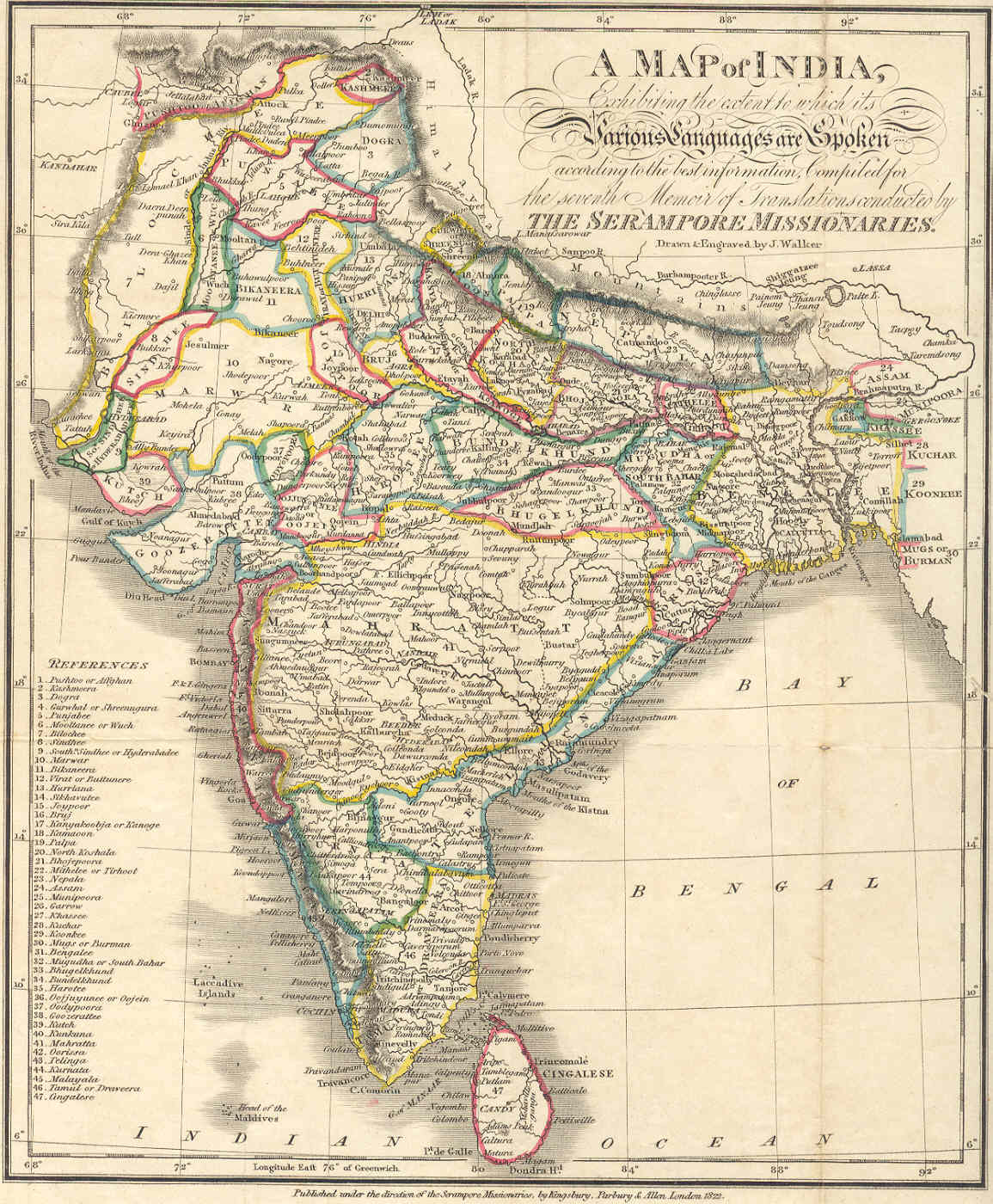
By Derek Armstrong
The map entitled A Map of India Exhibiting the extent to which its Various Languages are Spoken according to the best information Compiled for the seventh Memoir of Translations conducted by the Serampore Missionaries displays the various languages of India and the regions wherein they are spoken. Drawn and engraved by J. Walker and published in 1822, this map depicts the 47 languages known to be spoken in India at the time.
This map shows the degree of difficulty that Carey and his colleagues faced when it came to translating the Bible, or portions thereof, into native tongues. Carey undoubtedly had a passion, and ability, for languages and many of the languages listed on the map would eventually have, at the least, portions of the Bible translated into them.
The efforts of Carey and his colleagues were well documents, though sometimes too well and included exaggerations of the work actually accomplished. Several articles from the Boston Recorder and various Baptist magazines chronicle, with detail, the work being done by the Serampore missionaries. By mid-summer of 1816 Carey believes most of the languages of India to have portions of the Bible available to them.[1]
Unfortunately the missionaries did not find themselves without difficulty and were as hindered by political forces within their own supporters from time to time.[2] This did not, however, impede the missionaries from completing their work and putting the Bible, or portions thereof, into as many Indian languages as possible and thereby the hands of as many native Indians as possible.
The map contains the depiction of the whole of India and a viewer is able to then realize the enormous task of the missionaries, not just in terms of the volume of languages, but also in terms of plain geographical area. The translation of the Bible into various languages was only one part of the goal of conversion, another part would require providing the native peoples with the translated Bible and to do such would require someone to travel across India. India is no small country and the time it would take for someone to reach Serampore from a remote locale could be great. This, perhaps, evidences the greatness of the desire to put the Gospel into the hands of native Indians.
[1] Bible Translations. http://www.wmcarey.edu/carey/bibles/translation.htm. Accessed on January 7, 2009.
[2] Ibid.




0 comments:
Post a Comment